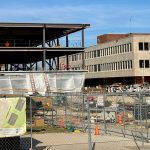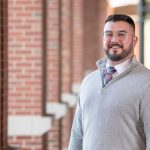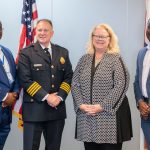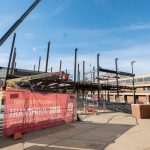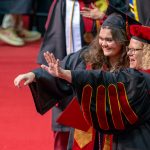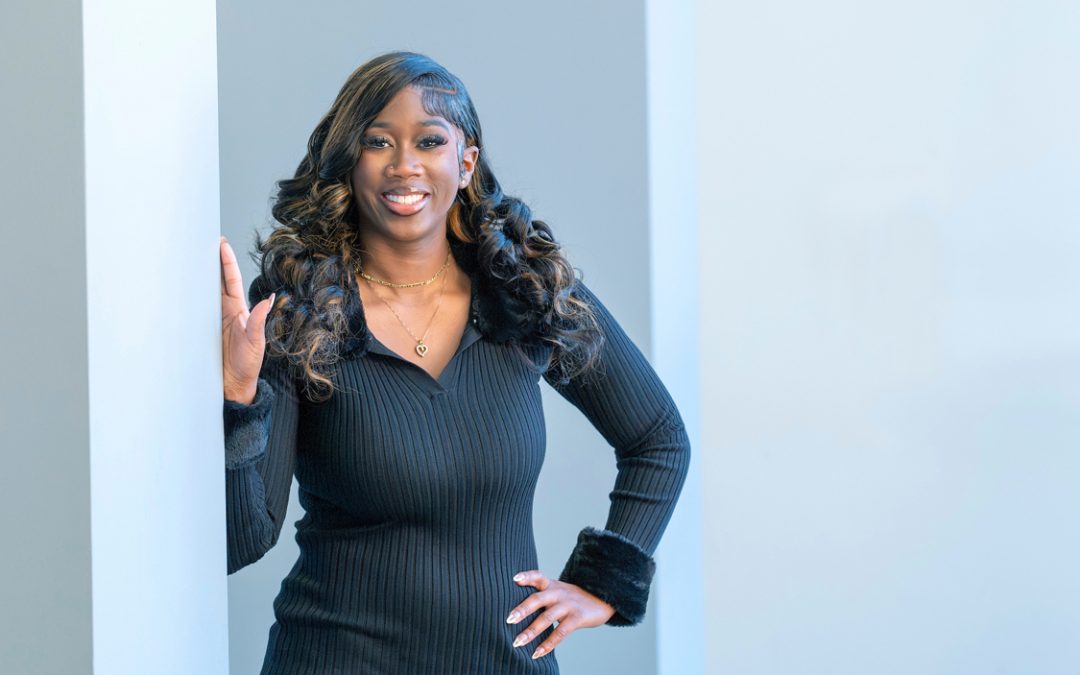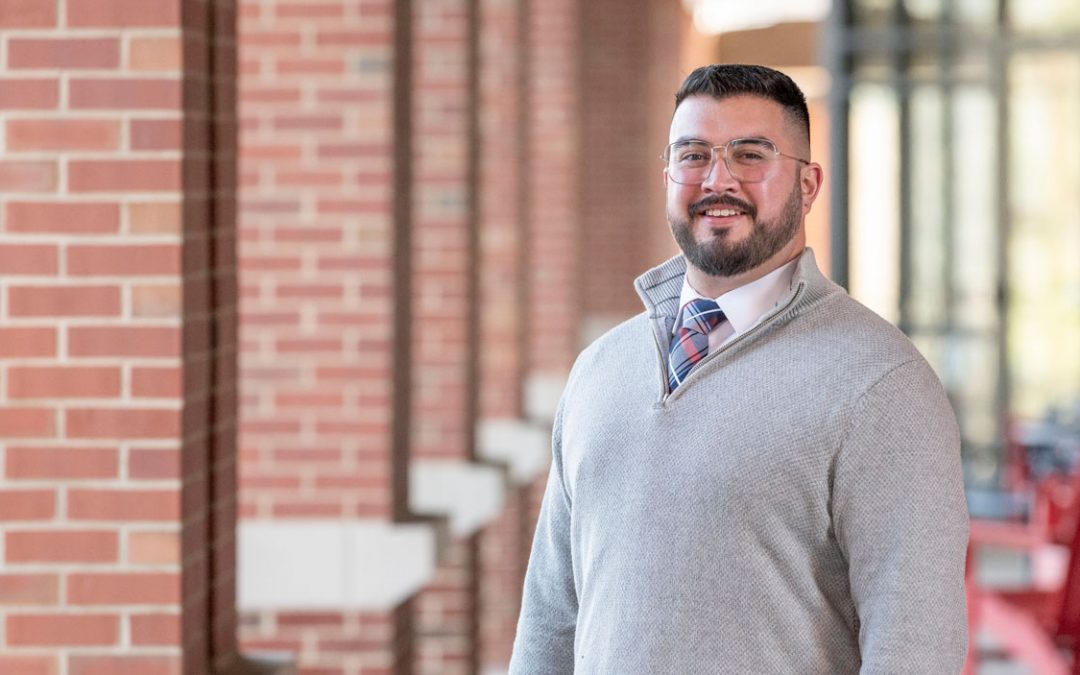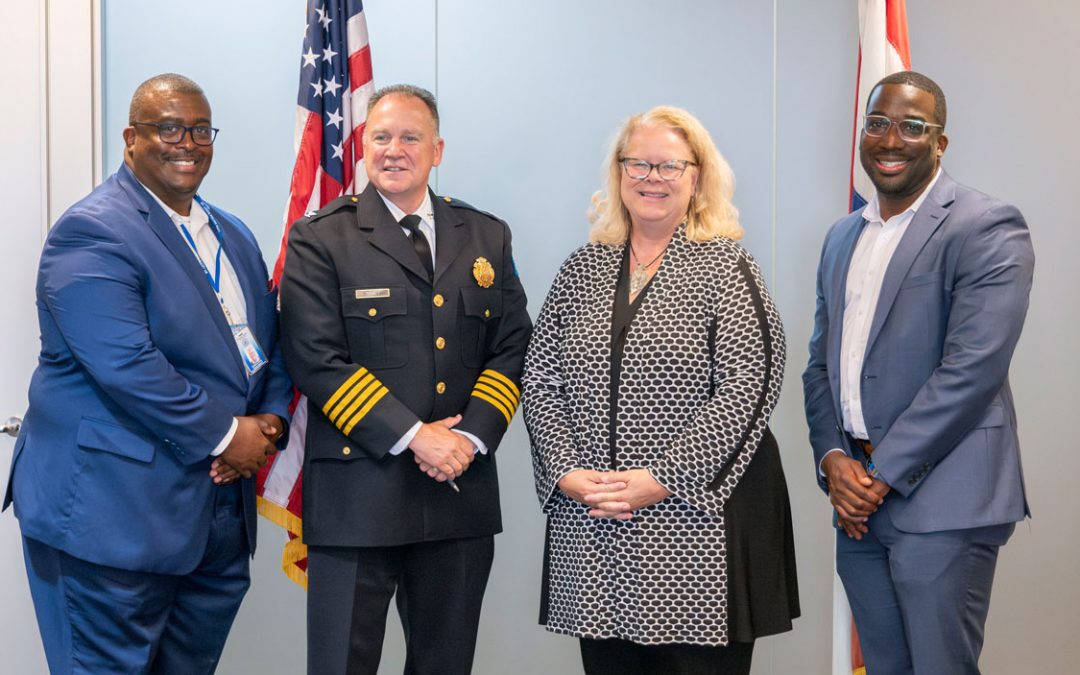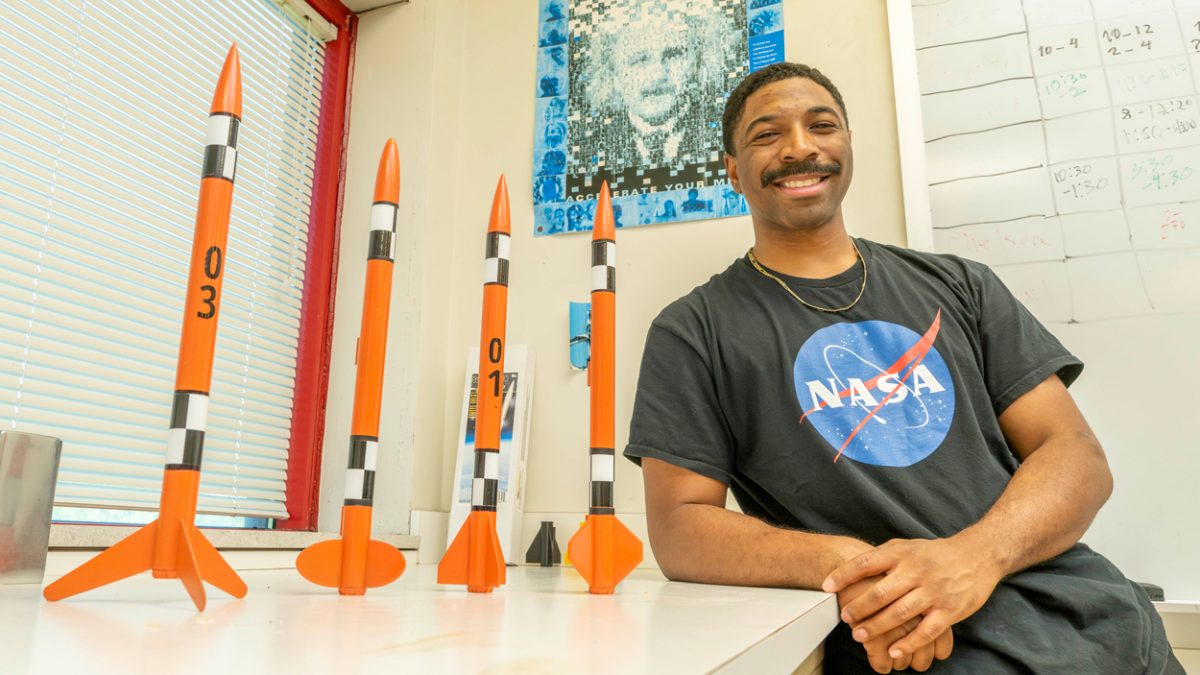
This summer, Keith Reece will graduate from UMSL with a bachelor’s degree in physics and go on to pursue graduate school. During his time at UMSL, Reece worked on comet spectroscopy research utilizing the NASA Infrared Telescope Facility and launched rockets in his free time. (Photo by Derik Holtmann)
Keith Reece likes to joke that his interest in physics is a coincidence that came down to the flip of a channel.
“My dad switched our cable network to AT&T, and then we got the Science Channel,” he said. “I remember I saw Michio Kaku – a theoretical physicist who’s a really big string theory guy – and I thought his job was just the coolest thing ever. There was a little chyron that said ‘Michio Kaku – physicist.’ That’s what really got me into physics.”
Of course, “coincidence” is a bit of an exaggeration. There’s plenty of evidence to suggest Reece was destined to become some sort of scientist. He taught himself to read with an encyclopedia of paleontology and regularly tuned into “Dexter’s Laboratory” growing up. He also built model airplanes with his dad and can still talk endlessly about the merits of various rockets, though the Saturn V used in the Apollo program is his all-time favorite.
At the University of Missouri–St. Louis, Reece has had the opportunity to come into his own as a scientist. He’s spent several semesters assisting Professor Erika Gibb and Assistant Professor Mohi Saki with comet spectroscopy research utilizing the NASA Infrared Telescope Facility. In his free time, he’s kept busy with the St. Louis Rocketry Association as well.
This summer, Reece will graduate from UMSL with a bachelor’s degree in physics and go on to pursue graduate school. He’s still deciding what he wants to study.
“There’s so much physics outside of astronomy,” he said. “I feel like I have barely dipped my toes into solid state physics, nuclear physics, particle physics, atmospheric physics, fluid dynamics. There are all kinds of things that I barely know anything about. So, I think I would like to investigate those fields, too.”
Reece credits his parents and teachers at McCluer North High School in Florissant, Missouri, for nurturing his innate curiosity. He asked so many questions in a high school physics class that his teacher, Deborah Trafford, shoved a college-level textbook into his hands. He could hardly comprehend a full sentence of the advanced physics, but that only served as motivation.
“It really, really made me want to learn more about it,” Reece said.
Upon graduating high school, Reece enrolled at the University of Missouri–Columbia. However, he eventually had to withdraw from classes due to health issues. When he was ready to return to school, he transferred to the Missouri University of Science and Technology. Unfortunately, that move coincided with the onset of the COVID-19 pandemic.
The switch to remote classes and taxing work as a roofer outside of school took a toll on Reece. Eventually, he decided it would be best for his mental health to be closer to home and transferred to UMSL.
It was an immediate relief. Reece was struck by the helpfulness of the faculty and staff in the Department of Mathematics, Physics, Astronomy and Statistics. He especially appreciated the efforts of Sonya Bahar, professor of biophysics and director of the Center for Neurodynamics, to acclimate him to the university.
“Almost immediately, she told me about all the different internship opportunities I could get,” Reece said. “She said I could get an internship with her in biophysics, or I could go to the NGA or I could work with Dr. Gibb in astronomy. This was the first time that I ever sat down with someone who just offered me internships in the field I’m interested in that paid money.”
Aware of the extraordinary opportunity before him, Reece took advantage of the offer and began working with Gibb and Saki conducting research on comets in the near infrared spectrum with advanced spectroscopy. He helped with observations of comet profiles – the light coming off the dust surrounding the nucleuses of comets – with the NASA IRTF.
“Actually getting my hands into the data processing taught me so much about astronomy,” Reece said. “I wouldn’t say it’s helped me more than the classroom. It’s more like it was a perfect complement to the classroom. Things that I felt were above my head during the research were perfectly explained by the classes. The things in the classes I felt I needed more clarity on made more sense when I actually had to do it.”
The experience helped Reece grow dramatically as a scientist. At first, he couldn’t believe how Gibb was able to adjust on the fly by merely glancing at the displays from the telescope. It was like magic. But within a year, he was following suit.
The work made a profound impact on him outside of the lab as well.
“It really changed the way that I live my life, and I’m not exaggerating when I say that,” Reece said. “Watching Dr. Gibb have to schedule every little thing to make her job work made me realize how inefficient I had been using my time. I started keeping better calendars. I started keeping track on things I do every day. I started keeping a journal of what I was able to accomplish and what I need to do.”
In addition to participating in comet research, Reece also launches rockets on his own and with the St. Louis Rocketry Association. Reece has always been interested in aviation and rockets, but a competition with the National Society of Black Engineers at Missouri S&T really kickstarted the hobby. He participated with the organization in a Boeing Flight Competition in which teams construct balsa-wood gliders that are launched with elastic bands.
“I feel like I really threw myself into that,” he said. “We even built a solid wind tunnel to test the different properties of airfoils we had sanded by hand.”
As graduation approaches, Reece has set his sights high for the future – though maybe a little closer to the ground than the comets he’s been observing over the years.
“My dream position?” he said. “A dream job would be working in neutrino research at Fermilab. I love Fermilab. I visited and it was just incredible. I talked to the staff about neutrinos and their enthusiasm for the subject rubbed off on me.”



